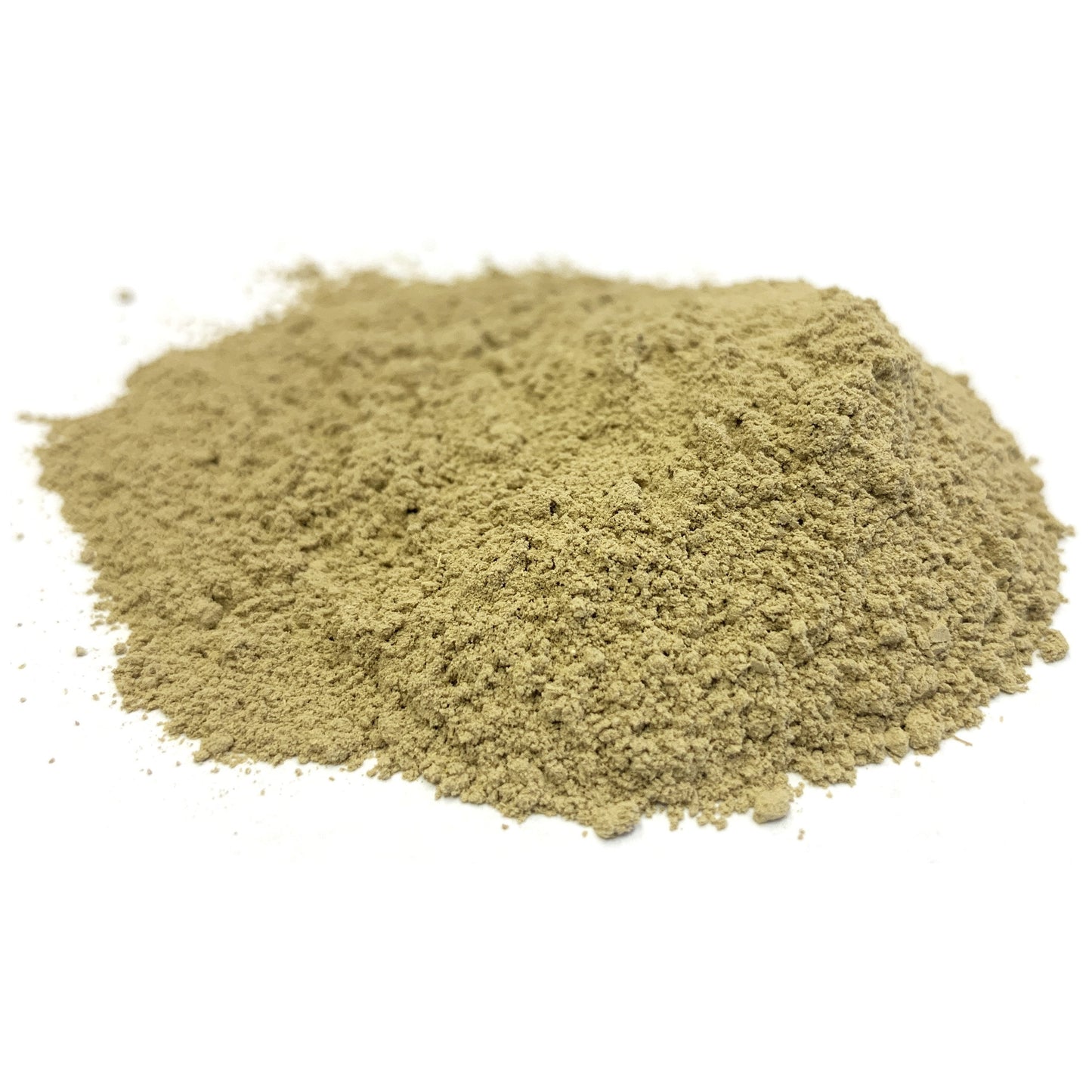Best Botanicals
Blue Cohosh Root
Blue Cohosh Root
Couldn't load pickup availability
Blue cohosh contains the following vital mineral elements: potassium, magnesium, sodium, phosphorus, salts of potash, calcium, iron and silicon. Stimulant (diffusive, relaxant), nervine (sedative), antispasmodic, parturient, emmenagogue, tonic, diaphoretic (sudorific), diuretic, anthelmintic, demulcent, anti rheumatic.
The round, simple, erect, 3 foot stem grows from a knotty rootstock and halfway up it bears a large sessile, tri-pinnate leaf, The leaflets are oval, petioled and irregularly lobed. The 6-petaled yellow-green flowers are borne in a raceme or panicle. The fruit is a pea-sized, dark blue berry borne on a fleshy stalk. Found throughout eastern and central U.S. in rich woods.
UPC: 084783001201.
Origin(s): United States.
Latin Name(s): Caulophyllum thalictroides.
Also known as: Papoose Root, Squawroot, Blue Ginseng, Yellow Ginseng.
Plant Part(s) Used: Root.
Appearance: Tan to light brown, fibrous & woody.
Aroma: Without noticeable scent.
Taste: Bitter, sweet with acrid after taste.
GMO Status: Non-GMO.
Allergen: None.
Additives: Free of any additives or preservatives.
Applications / Preparations: Can be put into capsules, teas or infused as an herbal extract..
Storage: Store in a sealed container in a cool, dry place.
Shelf Life: It is very difficult to pin down an exact expiration date for most single herbs as they do not really expire, they lose potency or strength over time but will still have value. Unlike synthetic material or drugs, herbs can contain many constituents that contribute to their medicinal effects. Even if when we know what the active constituents are, there are often many of them in a single herb, each with different rates of degradation. Some herbs lose their effect more easily. Other herbs that possess more stable compounds such as alkaloids or steroids will last much longer.
A huge part of the degradation rate of herbs depends also on the storage conditions of the herb, & even on the quality of the herb before storage – how it was grown, harvested, dried & processed. If the product is left in hot places or open to sunlight then it will degrade much quicker than if it was stored in cool, dry place & sealed tightly.
A good rule of thumb is that herbs should be stored no longer than 2-3 years but many herbs will have great strength much longer than that. To determine if a an herb is still good you can check the appearance & aroma. Herbs that are no longer acceptable will have lost much of its vibrant color & will instead appear dull & faded. The bigger key though is to smell the raw materials to see if the potent aroma is still present.
Warning: Not for use during pregnancy except under the supervision of a qualified healthcare practitioner..



